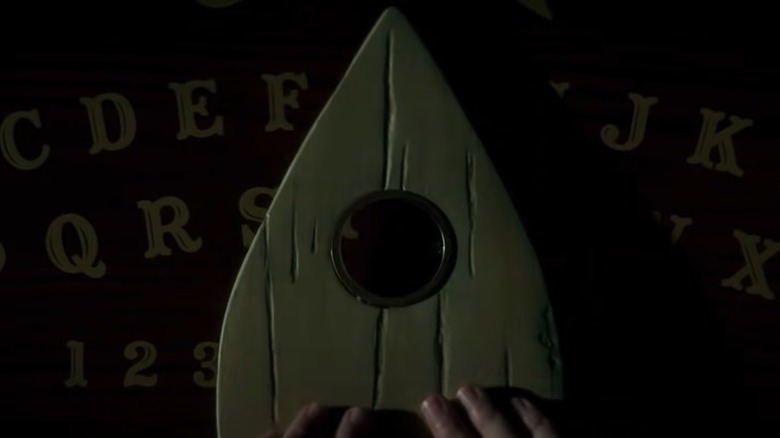What Fright Fans Need To Know About Ouija: Origin Of Evil's Three Rules
The line of demarcation between fantasy and reality is drawn with the sidewalk chalk of disappointment. Getting bit by a radioactive spider just makes you itchy and sick. Much to the chagrin of Ponce de Leon, drinking water in Florida does pretty much the same thing.
And horror movie tropes will break your heart every time. Sure, saying "Candyman" five times in front of a mirror is good for a quick adrenaline burst, but it won't bring you any closer to meeting acclaimed character actor Tony Todd. If you have a dream about Freddy Krueger, it generally has less to do with your parents' involvement with vigilante mob violence and more to do with your having eaten spicy food for dinner. In direct defiance of 2018's "Halloween," getting chased by a large 65-year-old man almost always ends with you escaping and him wheezing violently and bemoaning his sciatica.
So it should come as no surprise that the "Ouija" franchise is plump with what researchers and historians call "not real stuff." Examples are wide-ranging, but let's start with "Ouija: Origin of Evil," specifically the three most crucial rules of using a piece of wood with letters on it: "Don't play alone. Don't play in a graveyard." Most important in terms of etiquette, "Always say goodbye." It's a funny thing, but despite coming complete with a set of instructions, actual Ouija boards don't include any such recommendations.
Ouija plays it fast and loose with rules
Why don't the Ouija boards in real life come with these three important rules engraved in their wooden frames? Or, more contemporarily, on a sticker on their cardboard boards?
It probably has a lot to do with the way that the "Ouija" movies have more to do with 2012's "Battleship" than, say, a true crime documentary. Actual Ouija boards came out of the American spiritualist movement of the late 19th century, originally patented as a novelty item (via Smithsonian Magazine). In truth, as anyone who has used a Ouija board alone can tell you, you'll be fine if you use one alone. As anyone who has failed to say goodbye after using a Ouija board can tell you, you'll be fine if you don't say goodbye. As anyone who has used a Ouija board in a graveyard can attest, you never know when the sprinklers are going to turn on at the graveyard and ruin your brand new Ouija board.
The actual instructions that Hasbro includes with Ouija boards are full of useful information, however. By way of example, according to one pamphlet included with a 2001 edition of the product, if you leave the board and planchette under a lamp or on a sunny windowsill, they will glow in the dark for approximately 30 minutes.

